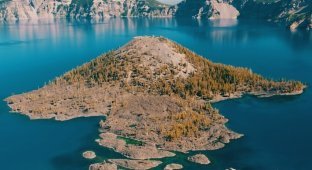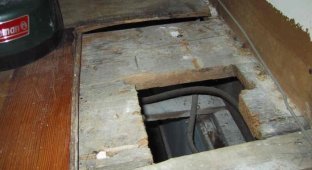Oak Island: Legends of Pirates and Treasures (12 photos)
Oak Island is a small forested enclave in Mahone Bay off the coast of Nova Scotia, Canada. Since the late 1700s, there has been a legend that the island contains a cache of hidden treasure. The exact origins of this story are disputed, but as treasure stories often do, it had a domino effect. 
Over the years, wealthy investors have squandered millions of dollars, and six people have even died, searching for treasure on the island. The main shaft was rightly called the "Oak Island Money Pit," and to this day treasure hunters still hope that it really does exist.
A Legend and a Curse 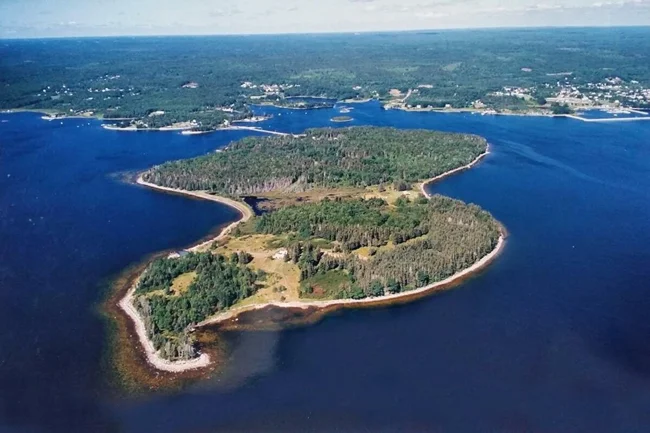
Oak Island
The island has been the subject of intense interest for hundreds of years. In the 1700s, locals believed that spirits and a ghostly black hellhound with piercing red eyes inhabited the island. The deaths of two fishermen were allegedly the result of ghostly lights appearing on the island. In addition, people suspected that pirate treasure was buried somewhere on the island. However, due to their superstitions, they stayed away from the place.
During the early days of treasure hunting on the island, another legend emerged. It said that a dark curse had been placed on the island, and that someone would actually find the treasure there, but only after seven people and all the oak trees on the island had died. So far, six people have died, as well as all the red oak trees.
Discovery of the Pit 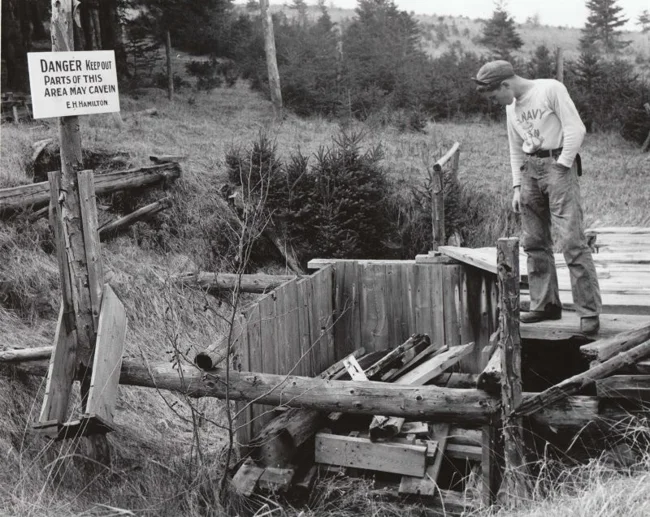
The original story about the Oak Island treasure appeared in a newspaper in 1795. How true this story is is unknown, but it tells the story of 16-year-old Daniel McGinnis, who was exploring the island one day and came across an unusual depression in the ground. Above the depression, McGinnis saw an oak branch that appeared to have been used in a pulley system. McGinnis assumed that someone had lowered something heavy and possibly valuable into the hole at this location.
McGinnis enlisted the help of two friends to dig under the branch. As they dug deeper with their shovels, they came across a layer of flagstone. This is a type of sedimentary rock that is not usually found at such a shallow depth. Strangely, the rocks looked as if someone had deliberately shaped them and fitted them together.
Underneath the rocks, they discovered a shaft. Clay and logs reinforced it. Inside, the boys saw a platform of oak logs, under which the shaft continued further. Two more log platforms puzzled the teenagers, and they realized that they had stumbled upon something much larger than they could handle. However, at the time, no locals wanted to help them due to superstitions associated with the island. Years later, McGinnis found investors who supported the first official treasure hunt.
The Excavation Begins 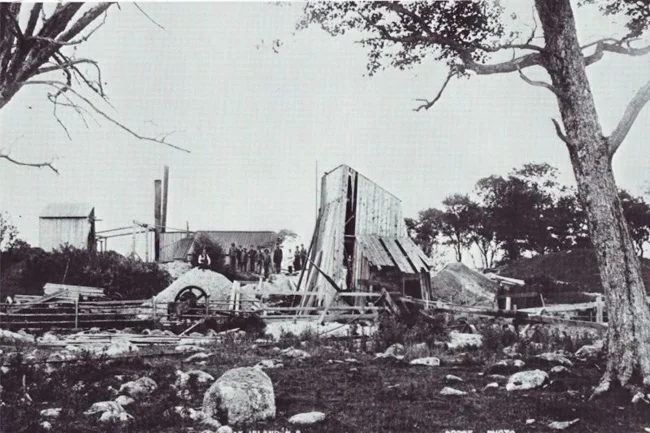
It wasn't until 1810 that McGinnis was assisted by the Onslow Company. This was a coalition of wealthy businessmen who saw the project as a major investment. Their goal was to dig the mine aggressively and find the treasure within a few weeks. As the excavation progressed, they came across layers of oak beams, coconut fiber, clay, and charcoal. This continued for nine levels, when they came across a stone tablet with strange runes.
The workers did not know the meaning of the symbols on the stone, so they removed it and continued excavating. After descending to a depth of 30 meters, they felt something metallic and thought they had found a chest. But their excitement quickly evaporated, as the mine had flooded overnight. They tried to drain the chamber, but to no avail. It was later suggested that the people responsible for the hidden treasure created some kind of water trap to prevent looters from accessing the treasure.
Oak Island Discoveries and Features 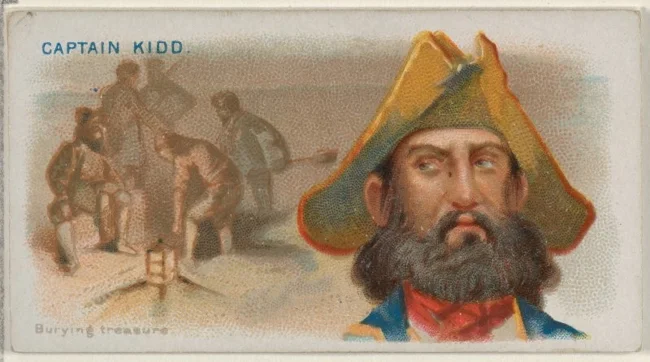
Truro replaced Onslow after it dropped out of the project. Truro used a drill to obtain soil samples, in which links of a gold chain were found.
In 1971, a video camera lowered into the shaft allegedly captured a severed hand and a possible treasure chest. After the video was taken, the shaft collapsed, and the search was abandoned.
Smith's Cove is another anomaly on the island. After almost three centuries of excavation, an artificial beach was created here. It is called the Swamp, although there is already a real swamp on the island. The mystery is compounded by numerous evidences of very early artificial modification of the landscape. According to one theory, the island is literally two separate islands that someone artificially connected together to confuse potential treasure hunters.
Other pits on the island 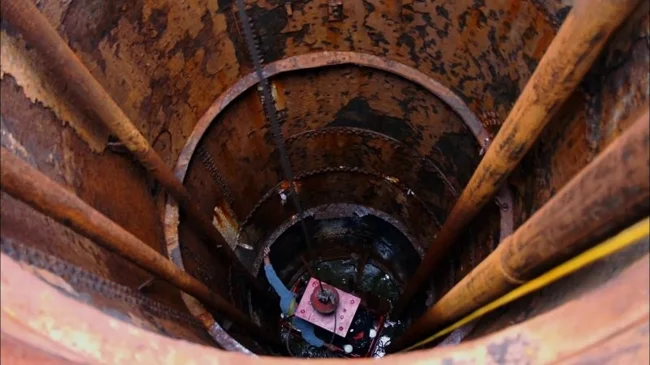
Potential treasure locations are not limited to the Money Pit. There are six in total.
Smith's Cove Excavations at Smith's Cove, believed to be the site of five box drains feeding the Money Pit traps, have uncovered significant quantities of coconut fibre dating from 1260 to 1400.
Nolan's Cross. In 1981, Fred Nolan discovers five cone-shaped boulders at the site that appear to form a Latin cross. In the centre is a stone that resembles a human head.
The Swamp. After the Laginas partially drain the swamp, they find a Spanish coin from 1652. They also learn that at least four more metal objects may be buried there.
The Stone Triangle. In 1937, a stone triangle of stones is discovered on the island, first mentioned in a book about Captain Kidd.
10X. A strange metal object is found in 10X. Experts investigate the shaft next to the Money Pit and discover a possible chamber that appears to contain a wooden pole, side tunnels, and a chest.
And of course, the aforementioned Money Pit.
Trap or just geology? 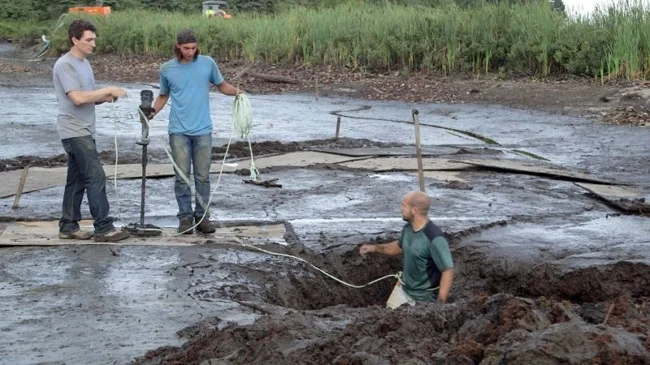
Work continues
In 1995, the Woods Hole Oceanographic Institution conducted a survey of the area and concluded that the layers of rocks and logs in the shaft were likely formed by natural factors. Additionally, various attempts to dig other diagonal and parallel shafts near the original site make it difficult to determine which shaft was the original Oak Island money pit. Further complicating the problem are claims of gold links and murky video footage that was obtained from secondary sources or of dubious origin. The same can be said of the mysterious encrypted stone tablet.
New Hope and New Investments 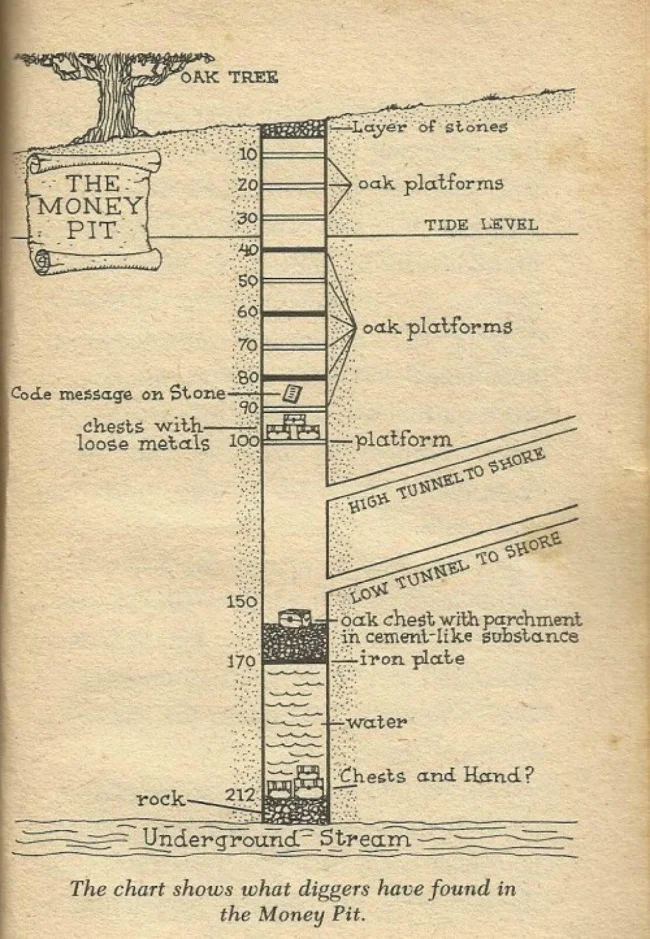
Since rumors of treasure first surfaced, there have been numerous purchases of the island's properties. Finally, in 2006, Rick and Marty Lagina won an auction to acquire the majority stake. Now, they and their partners own about 78 percent of the island as part of a joint venture.
As children, the brothers were fascinated by the place and visited it many times in their youth. Their energy and investment paid off after eight years of running the project themselves. In 2014, the History Network began airing The Curse of Oak Island, a TV series featuring the Laginas. Although there are other crews on the island, the Laginas have by far the largest operation.
Tales of Fortune 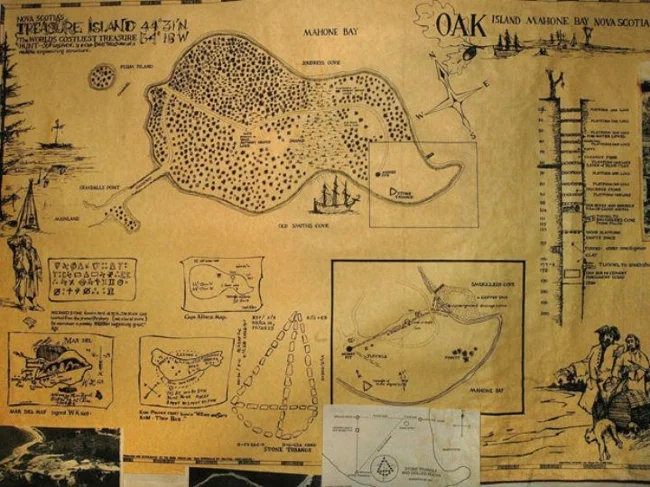
A treasure island must have a map
It is difficult to say how old the legend of the Oak Island treasure is, or where it began. Like any other mystery, this story has changed many times, and how much truth there is in it is unknown. Sometimes an intriguing story can be much more profitable than the subject of a legend. This seems to have happened with the island, the excavations of which turned out to be in vain. However, the legend contributes to the development of the tourist industry. 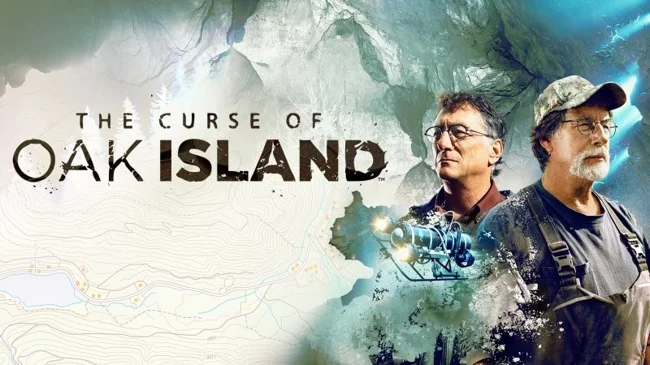
The Lagina brothers launched a show
On the other hand, there is probably a significant amount of gold and treasure hidden in shallow waters, caves and isolated bays. Even in today's digital world, there are many legends about buried pirate treasures and secret maps, and at least some of these legends probably have some basis in reality. 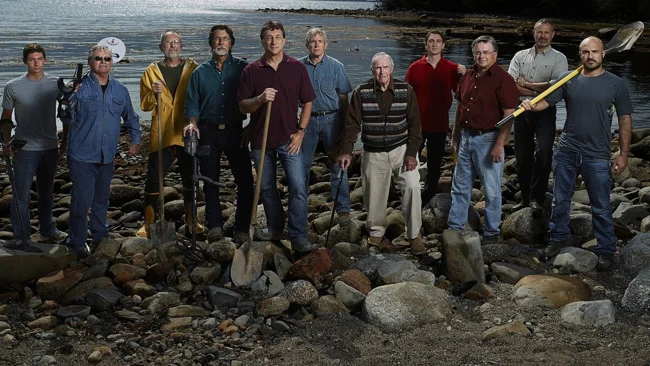
This gives hope for the next big find... But will it be on Oak Island? After all, according to legend, one more person must die before we can find out. 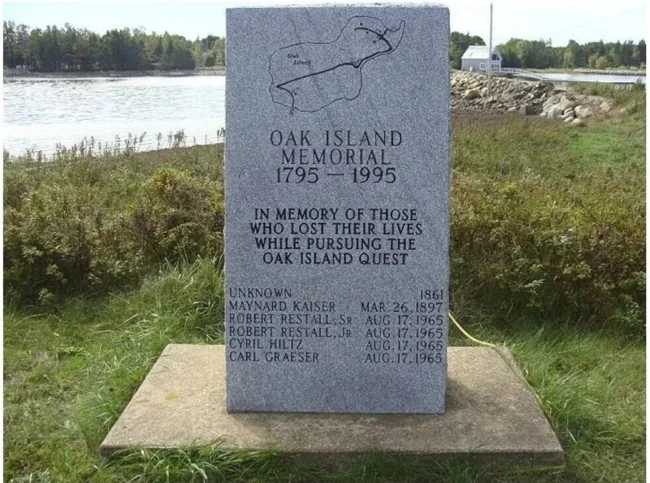
A monument to the victims of the island












